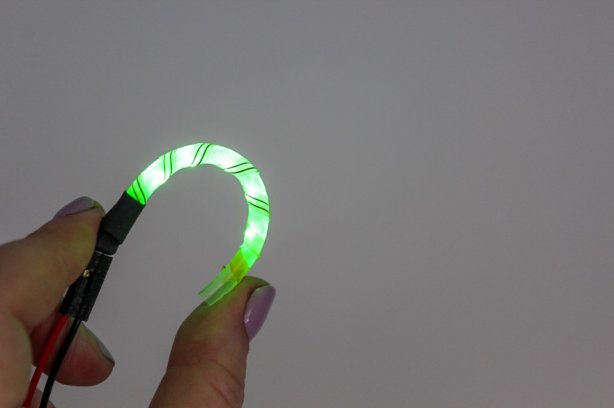
Researchers print flexible silver nanowire circuits
Embedded electronics enable entire circuits, rather than just single components, to stretch.

11th July 2024
Innovation in Textiles
|
Nottingham, United Kingdom
Researchers at Nottingham Trent University’s Medical Technologies Innovation facility in the UK have developed a 3D stretchable electronic strip they believe will find a range of new applications in wearable electronic textiles.
The circuitry within the 3D structure is twisted to form a helical ribbon enabling the strip to bend in multiple directions and stretch up to at least half its initial size again.
Stretchability is important because many textiles, such as in medical compression garments or sportswear, are stretchable because they must not restrict the wearer’s movement.
The researchers have already demonstrated LED and temperature sensing helical e-strips as part of the study.
A rubber cord supports the structure and helps to prevent damage from buckling. Consideration has also been given to compatibility with clothing and washability.
“We have been able to show the potential for a new form of 3D helical strip for embedded electronics in e-textiles,” said Dr Yang Wei, an expert in electronic textiles and electronic engineering at Nottingham Trent University and the principal investigator of the research. “We have defined the design, developed prototypes, performed mechanical testing and validated the functionality of the concept. This opens up a range of new possibilities for e-textiles for possible future use in healthcare and elite sports settings.”
“The basic idea has been around for centuries – it’s the same concept as taking a metal wire and making it stretchy by winding it into a spring,” added research fellow Jessica Stanley. “While helices have already been used in stretchable electronic devices, up to now they have only been used as interconnects – wires that connect parts of a circuit – or single components. What sets our work apart is that strips of flexible circuitry containing small components and circuits more complex than a single wire or printed component are wound into a helix, so that the entire circuit can stretch.”
“Because many e-textile products need to be stretchy it is important to have stretchable electronic parts that can move and stretch with the fabric. This study documents our initial work on a new way to achieve this.”
The technology has been patented and the research was published in Nature.

Business intelligence for the fibre, textiles and apparel industries: technologies, innovations, markets, investments, trade policy, sourcing, strategy...
Find out more